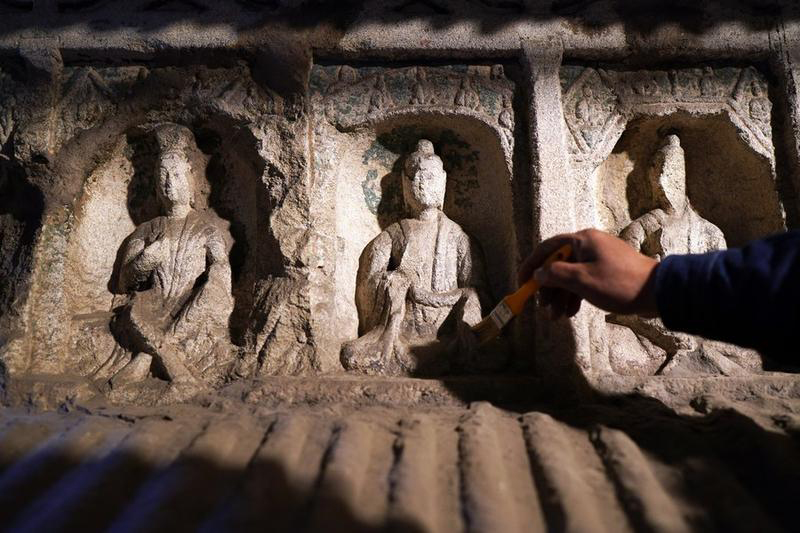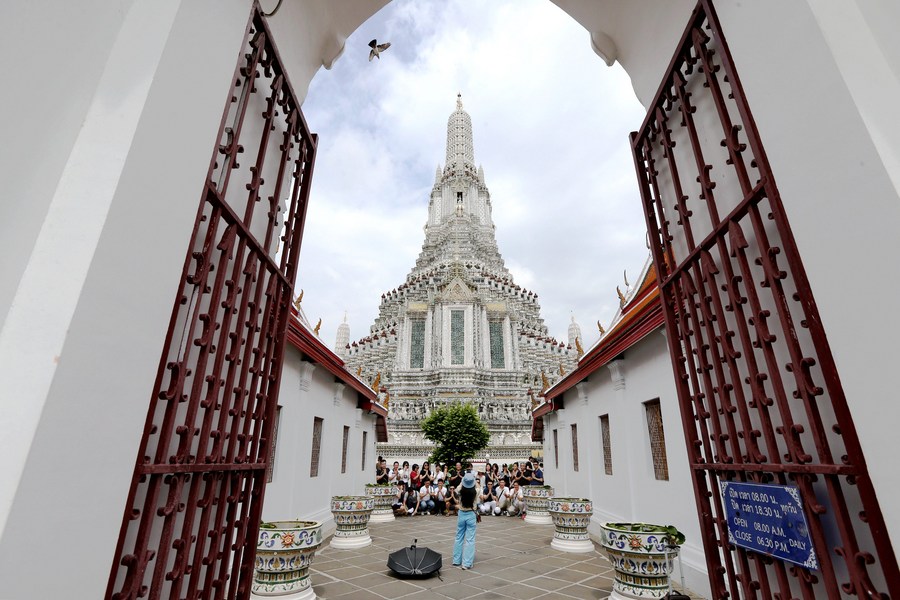
TAIYUAN – Just after bidding farewell to a group of Thai teachers visiting universities in Beijing, tour guide Yang Yaoyu rushed to Shanxi Province in north China to greet another group of Thai visitors.
The seasoned Thai-speaking tour guide can attest to a recent surge in enthusiasm among Thai tourists towards China, after a mutual visa exemption agreement between the two countries took effect on March 1.
“Previously, the peak of Thai tourists to China was in April after Songkran festival. However, my schedule is now fully booked from March 3 until the end of April,” Yang said.
Porntip Rojansunan, together with the other 20 Thai visitors in her group, is a beneficiary of the visa waiver. After flying directly from Bangkok to Taiyuan, capital of Shanxi, on March 9, the group commenced their five-day trip by visiting three UNESCO World Heritage sites in the province, namely, Mount Wutai, Yungang Grottoes, and the ancient city of Pingyao.

“Before, I was only familiar with Chinese destinations like Beijing and Shanghai. Since coming to Shanxi, I must say how impressed I am by the profound history and rich culture here. I will undoubtedly encourage my friends and relatives to come to experience the charm of Shanxi themselves,” Porntip said.
The visa-free policy has boosted cultural exchanges between the Chinese and Thai people, and more and more Thai tourists are considering China as their first choice destination for overseas travel.
Data from China’s major online travel agency Trip.com showed that on March 1, the number of Chinese tourists to Thailand increased by more than 30 percent year on year, while travel orders from Thailand to China surged by threefold year on year, an increase of more than 160 percent compared with 2019.

China and Thailand are important tourist destinations and sources for each other, and the implementation of the mutual visa exemption holds significantly positive implications for the growth of the tourism sectors in both nations, said Qin Jing, vice president of Trip.com Group. The Chinese side can provide Thai tourists with more personalized options spanning culture, folk custom, and snow-and-ice activities, among others, Qin added.
China is persistent in its facilitation of entry for foreign nationals, promising to make itself a preferred destination for international travelers. Since the mutual visa exemption policy between China and Thailand came into effect, the number of countries that have such entry policy with China has increased to 23, including Singapore, the Maldives, and the United Arab Emirates.
In addition, China has adopted a visa-free policy for Switzerland, Ireland, Hungary, Austria, Belgium and Luxembourg on a trial basis, starting March 14. This series of measures is regarded by industry insiders as a positive signal that is conducive to promoting global economy and trade and accelerating personnel exchanges.
“The recently concluded sessions of China’s top legislature and top political advisory body, or the ‘two sessions,’ also mentioned that the country will facilitate foreign nationals to work, study, and travel within China. This indicates that the fundamentals of China’s unwavering commitment to opening up remain constant,” said Zhang Wei, secretary general of the inbound tourism branch of China Association of Travel Services.















































